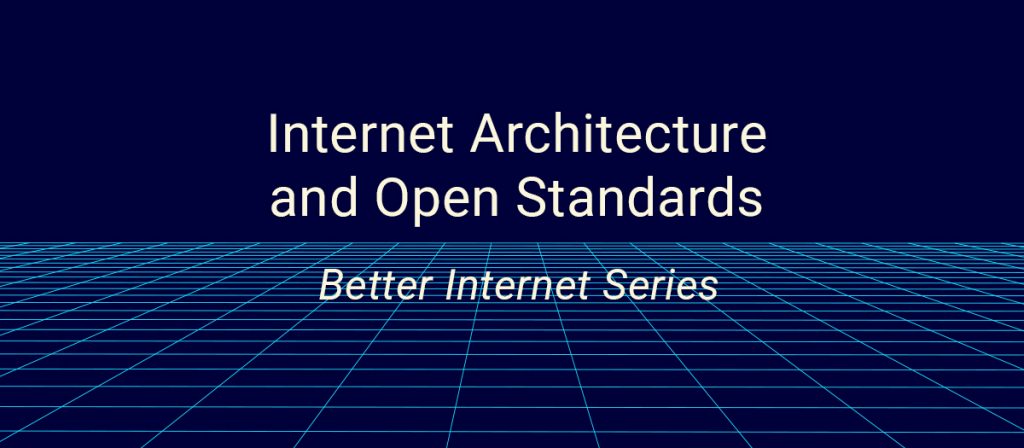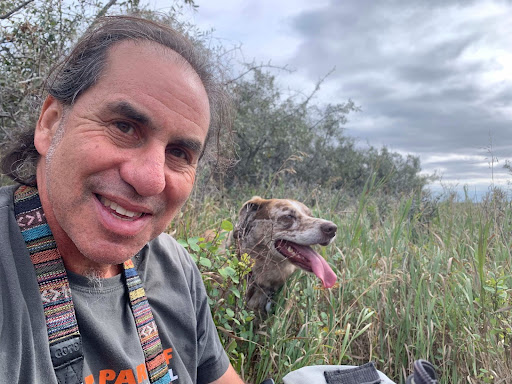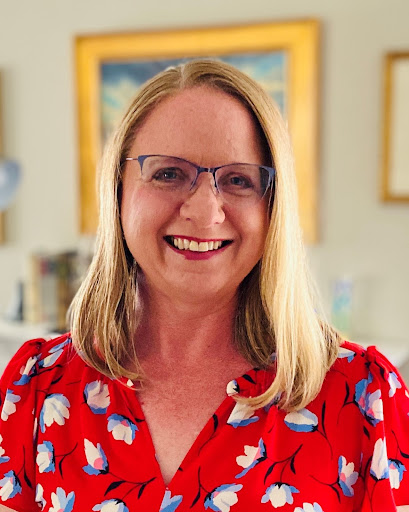Better Internet Series: Architecture and Open Standards
jeudi 17 mars 2022 à 22:21
See our article introducing this series.
This article is the third of five detailing breakout sessions from the 2021 Creative Commons (CC) Global Summit about “creating a better internet.” The Summit was an opportune platform for these conversations, as it drew over 1600 attendees from over 90 countries. Attendees included organizations, activists, advocates, librarians, educators, lawyers, and technologists.
This article summarizes conversations where participants were asked how they would envision and realize a better internet as it relates to architecture and open standards. Other articles in the series include Access to Information and Knowledge, Misinformation, and Platformization and Choice.
INTRODUCTION
The relationship between people and the spaces they inhabit is always evolving – one reciprocally shaping the other. Whether the space is a building or a park, it is designed to meet needs and solve problems. But with time, these spaces need reshaping to address current needs and problems.
When the internet was first created, it was designed for a military need, and then evolved to increase communication between scientists. The invention of the World Wide Web in the 1990s opened up the internet to millions who engaged in this space. As a result, it evolved into the good and bad of the internet we experience today.
The design of any space, including the internet, is ongoing to address new problems and challenges. This is exactly what one conversation during the CC Global Summit aimed to do – to discuss the current state of the internet and its future as it relates to internet architecture and open standards.
BACKGROUND
Simply put, internet architecture is an assemblage of diverse and independent networks. For information and messages to be understood, the internet relies on standards and protocols (like TCP/IP, HTML, CSS, and XML).
The internet was set up using open standards and protocols, interoperability, open internet ecosystems, and scalable decentralization. This makes it possible for services, devices, and applications to work together.
Vint Cerf, one of the fathers of the internet, said, “The theory we had is that if we just specified what the protocols would look like and what software you needed to write, anybody who wanted to build a piece of the internet would do that and find somebody who would be willing to connect to them. Then the system would grow organically because it didn’t have any central control.”
OPEN VS CLOSED STANDARDS
From a technical designer and developer side, standards are extremely important. From a user perspective, standards make internet connectivity seamless. Standards are “open” when they are non-proprietary, collaborative, and transparent. Open standards allow compatibility between products from different manufacturers, so that they work together, communicate, and share information.
A closed standard is a file format, protocol, or program whose specifications are not publicly available, software whose source code is not available and includes patent-encumbered technologies. Closed standards are typically developed by private companies and only hardware and software from the same company can be used together. This creates a closed, or private, network only accessible to authorized users.
INTEROPERABILITY
Billions of systems, using different combinations of hardware and software, link together and communicate because they are using the same set of protocols and standards. This infrastructure promotes interoperability – where information is shared openly. This multistakeholder use of the internet strengthens the open internet ecosystem.
OPEN INTERNET ECOSYSTEMS
An open internet ecosystem model is open, transparent, collaborative and provides the benefits of sharing information and knowledge. In fact, one of the objectives of the United Nations is to protect and promote the right to access to information, fundamental freedom, and a key pillar for building inclusive knowledge societies.
DECENTRALIZATION
Simply defined, a decentralized web is a system of interconnected, independent, network of resources that work together to provide private, secure, access to information and services where no one player can control its use.
VISION FOR THE FUTURE
During the breakout conversation on “Internet Architecture and Open Standards,” participants discussed problems, generated ideas, and formulated solutions about re-imagining the internet. The following vision emerged from that session.
The emerging vision for the future of a better internet includes prioritizing open standards, interoperability, an open internet ecosystem, decentralized power, education, and social responsibility.
THE FUTURE IS AN INVESTMENT IN OPEN STANDARDS AND DEVELOPMENT
There are thousands of standard organizations around the world and there is no one set of rules for them all. Without implicit cooperation and agreement, this creates a spectrum of standards – some open and some closed.
CC Global Summit participants supported open standards to optimize interoperability. There were concerns that there were barriers to true, collaborative, and inclusive standards development. Comments included, “people without large bankrolls feel that their concerns were not able to be heard in standards development” and “those traditionally left out of decision-making need to be at the virtual table.”
There was also mention of investing in testing. Standards must be tested, approved, and ratified by the appropriate standards organization before they are accepted and adopted by the majority of vendors. Testbeds are controlled experimentation platforms, where new products and developments can be tested in an environment that resembles real-world conditions. Testbeds are funded privately, by governments, or a combination of both.
THE FUTURE IS ADVOCATING FOR INTEROPERABILITY
What is preventing interoperability on today’s web? Is it only hindered by monopolies and proprietary systems? Or are there regulations that make it more difficult, or illegal, to create new products that work with existing products?
CC Global Summit participants want to see more advocacy for interoperability to achieve more control over platforms. They want to take a deeper look at the legal issues and regulatory processes hindering interoperability and open standards. Interoperability is the future of the internet. This includes advancing innovation and openness.
THE FUTURE IS AN OPEN INTERNET ECOSYSTEM
Today’s internet is filled with walled gardens – a closed ecosystem, operated by people within that system. In walled gardens, the owner controls areas such as access, hardware, information, algorithms, and user data. Consider algorithmic feeds, social networks, paid services, and subscriptions.
During the CC Global Summit breakout session, participants felt that the future must prioritize an open and diverse internet ecosystem with trusted information that serves the public’s interest.
THE FUTURE INCLUDES DECENTRALIZED CONTROL AND USER CHOICE
Much of the internet is currently controlled by centralized control. Summit participants would like to see an internet where no single party is responsible for controlling the flow of information. They would also like to see differentiated levels of gatekeeping regulation and moderation depending on a specific position in the stack. (A layered internet protocol stack includes layers for applications, transportation, networking, linkage and physical).
THE FUTURE INCLUDES INTERNET EDUCATION
The internet has many complexities, layers, and stakeholders. CC Global Summit participants voiced prioritizing internet education in order to combat misinformation and myths surrounding internet architecture, open standards, and open access.
CONCLUSION
We are at a critical juncture. The exponential growth in technology is converging with users who want to take back control of their experience on the web. Based on comments made during the CC Global Summit, it feels like what was old is new again in that the original architecture and design of the internet – with open standards and protocols, interoperability, open internet ecosystems, and scalable decentralization – is where we want to be for the future.
APPENDIX
The following is a consolidation of comments made during the 2021 CC Global Summit breakout session, Internet Architecture & Open Standards. If you would like to add your thoughts and participate in the conversation, use #BetterInternet on social media.
PROMPT
“I will know we have achieved a better internet with regard to internet architecture and open standards if/when…”
| Open Ecosystems | When people don’t think of the Internet as a series of walled gardens (and it also isn’t a series of walled gardens) |
| Open Ecosystems | People know and have a say over what’s happening with their data. |
| Diversity in ecosystems | Vendor diversity, lower barriers to entry, more diverse ecosystem of providers. |
| Open Standards | Those traditionally left out of decision-making are at the virtual table/ it’s not possible for those in power to make decisions unilaterally. |
| Open Standards | Internet businesses are concerned with the standards process with the bureaucratic quagmire that precludes new product development. |
| Open Standards | We do not have to suggest people use a particular browser to present. |
| Open Standards | Required, and preferred, interoperability (the real-time data exchange between different systems that speak directly to one another in the same language, instantly interpreting incoming data and presenting it as it was received while preserving its original context.) |
| Open Standards | Every platform has translation capabilities. |
| Open Standards | When we have a new raft of standards that reflect the developments in decentralized implementations across all the internet standards body stack (Internet Engineering Task Force -IETF, World Wide Web Consortium – W3C, WHAT-WG, semi-informal industry agreements like Open Authorization), and that those new standards are being adopted at the browser/OS level. |
| Decentralized avoidance of using internet ‘gatekeepers’. | Single parties aren’t responsible for controlling the flow of information in any particular aspect of internet communication. |
| Decentralized avoidance of using internet ‘gatekeepers’. | Differentiated levels of regulation/moderation depending on a specific position in the stack and related gatekeeper power. |
| Education for policymakers | Better education of lawmakers and policymakers re: infrastructure layers, standards, and The Stack |
| Social Responsibility | When young people are not addicted to platforms that make them suicidal – Algorithm driven content |
| Communication | People don’t spend a long time establishing the best way to communicate before actually being able to communicate. |
PROMPT
“We are working to realize a better internet with regard to architecture and open standards by doing X to achieve Z.”
| Testing: Organize code so that things that might change will be easier to change. | Separating UI from information |
| Testing for Solutions: Controlled experimentation platform, where solutions can be deployed and tested in an environment that replicates real-world conditions | Investing and encouraging testbeds, free/libre, and open-source software reference implementations. |
| Independent Standards | Early, early, early research into supporting long-term independent standards. Workers unattached to any particular company but working on behalf of development communities/protocols like ActivityPub. Alternative naming systems. distributed identity. |
| Open Standards | Showing where closed, proprietary standards cause harm |
| Open Standards | Creating commons-owned alternatives to proprietary standards. |
| Open Standards | Figuring out where public international law is important and a helpful tool for good operational standards, and when it produces skewed solutions. |
| Interoperability | Advocating for interoperability to achieve more user control over the platforms |
| Interoperability | Figuring out what legal issues prevent/create problems/conflict with interoperability goals, creating more open standards, etc. |
| Interoperability | Heavily involved in the regulatory process to advocate for interoperability. |
| Education | Educating policymakers on how things work |
| Education | Organizing training on an open internet, CC licenses, and access to knowledge. |
| Education | Educating people about the value of openness and commons-owned standards. |
| Digital Divide Universal Accessibility |
Presenting universal accessibility as a necessary value. |
| Digital Divide Investing |
Investing in internet adoption. |
The post Better Internet Series: Architecture and Open Standards appeared first on Creative Commons.






